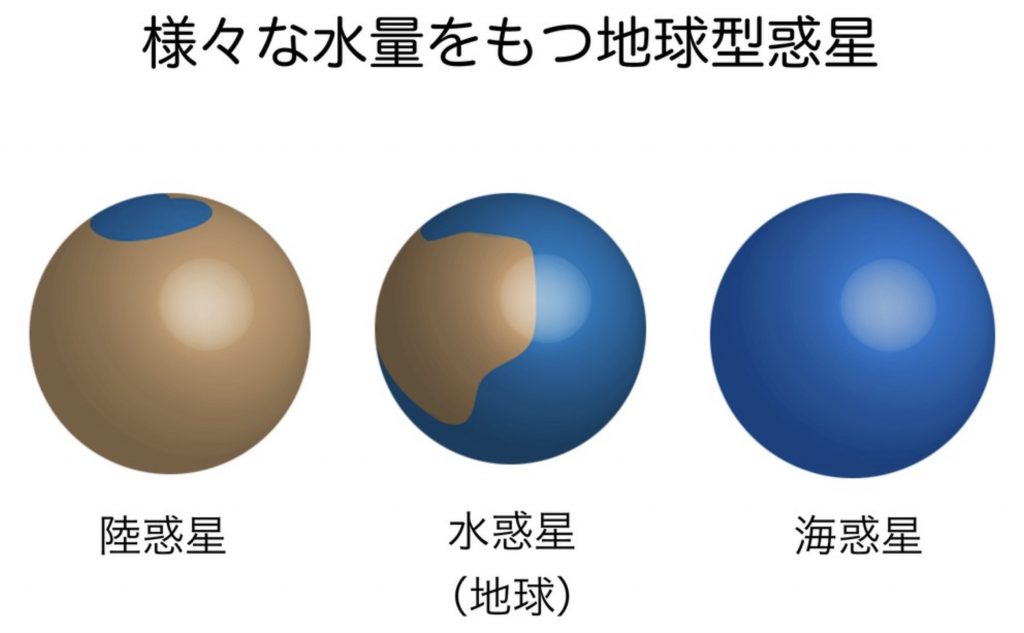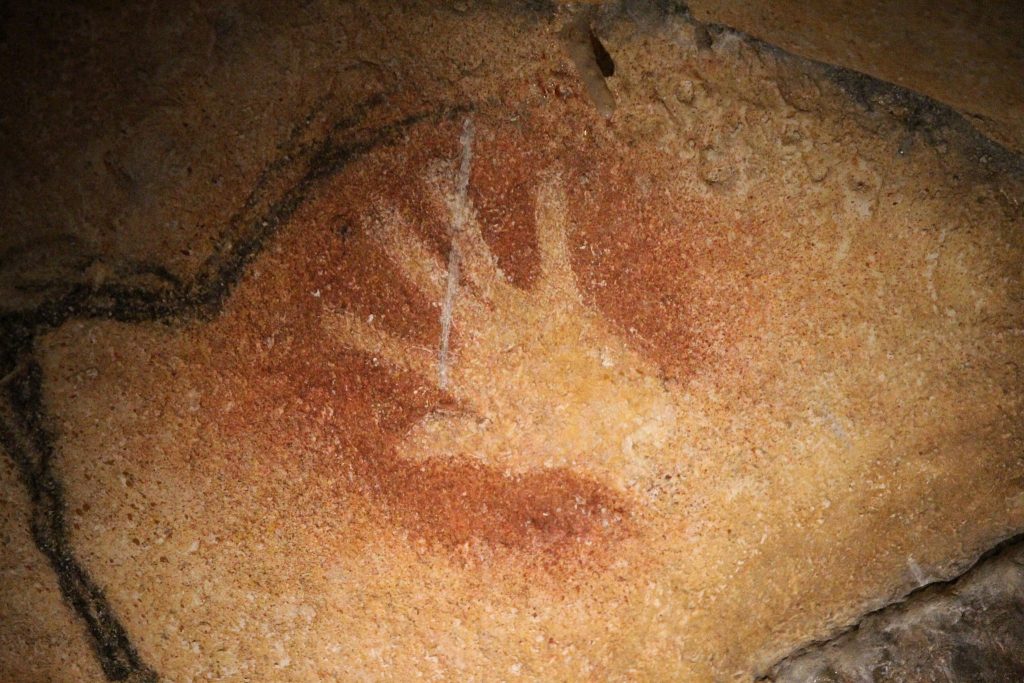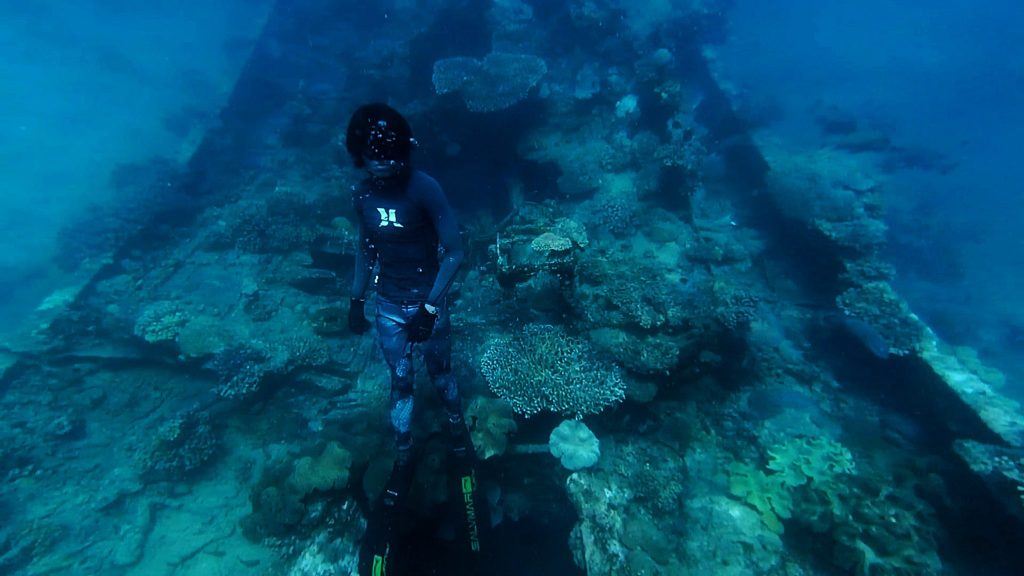第3号 特集:鉄の惑星・地球 Earth, the Iron Planet 铁之星球——地球
3号の読み方:鉄はいつでもそこにある
伊藤孝【特集担当】
How to read No. 3: Iron is always thereTakashi Ito【HBH Editor】
阅读指南:从未缺席的铁
われわれが「鉄」と名付けた元素[fig.1]は、なぜこうも、そこかしこに顔を出してくるのだろう。近代建築を支え、われわれを遠くまで運び、高度情報化社会をつかさどる。地球の磁場を生み出し、光合成を機能させ、血液中で酸素を運ぶ。さらには、武器となり、農器となり、団らんの中心に陣取る鍋となる。いったい、鉄とまったく無関係です、という事物・現象はあるだろうか。

fig.1──諸言語における「鉄」・元素記号・原子番号
Google翻訳を信じます。
一方で、どこにでもしゃしゃり出てくるもの特有のうっとうしさはない。むしろ、控えめですらある。しかし、「あれっ?」と一旦気になって注意を向けはじめると、いたるところに姿が見える。そして、巧妙にものごとをやってのけ、なくてはならない重要な働きを担っていることに驚かされるのだ。ときに主役として、ときに脇役として。
最近では、異なる性質を持った宇宙が10の1,000乗〜1万乗個存在して、はじめてわれわれが宇宙と思っている宇宙が存在するというマルチバース(多元宇宙論)が、SFではなく最先端物理学として議論されている。小阪淳『構築4グラフィックス:鉄図』は、われわれが暮らす宇宙における鉄歴史絵巻である。138億年前の宇宙誕生の直後、粒子と反粒子のごくわずかな差により、物質が存在する宇宙になった。結果、高校の物理や化学でも習う陽子・中性子が誕生し、水素とヘリウムからスタートした。元素の種類としては単調な世界である。
やがて誕生した星々の内部で炭素や窒素など無数の元素が生み出された。そして、巨大な恒星の最後のステージとなる赤色超巨星や白色矮星が超新星爆発をした際に鉄を主とした重い元素が誕生し、ほかの元素もろとも宇宙に飛び散ったのだ。太陽系は約46億年前に銀河系の片隅で、水素やヘリウムに加え、これら宇宙にまき散らされた元素をもとに作られた。現在、太陽の中心では、水素からヘリウムへの核融合反応が起こり、大量のエネルギーを生み出しているが、炭素や鉄は生成されていない。これらは以前存在した星々の残骸なのだ。われわれが「星の子」と呼ばれるゆえんだ。そして鉄も同様に星の子である。
小学校の社会科の時間に、海の面積は7割、陸の面積は3割と学習し、「地球は水の惑星」としっかりと刷り込まれた。なので、[fig.2]を見ると驚くのである。地表の7割を占める海はもちろん、氷床・湖水・地下水・河川水など、地球表層の水を全部かき集めてもこれしかない。このスケールでみると、海がいかに薄い存在であるかも実感できる。阿部豊『生命の星の条件を探る』★1をぜひ読んでいただきたいのだが、現在の地球惑星科学の知見では、なにか必然性があって、このような水の割合になったわけではないらしい。もっと水が少ない陸惑星だったり、どこに行っても水だらけの海惑星になっていてもなんら不思議ではなかった。むしろ、地球のもととなった隕石に含まれる水の量を勘案すると、現在の数十倍の海ができていても不思議ではなかったらしい[fig. 3]。

fig.2──地球と地球上のすべての水
https://water.usgs.gov/edu/gallery/watercyclekids/global-water-volume.html

fig.3──様々な水量をもつ地球型惑星
https://speakerdeck.com/noinoi79528/nhk-karutiyajiang-zuo-huo-xing-ke-xue-zui-qian-xian-sheng-ming-wosu-suhuo-xing-falsetiao-jian?slide=29
これら陸惑星、水惑星、海惑星のうち、地球がどのタイプになろうとも、中心に沈んだ鉄が、核になったことは間違いないだろう。しかし、どの型の惑星になるかは、惑星表層の鉄の運命にとって、大きな影響を及ぼしたはずだ。拙稿『鏡の日本列島−3:「鉄なき列島」』でも紹介したように、現在、鉄資源として利用されている主要なものは縞状鉄鉱床である。その成因でまず重要なのは、岩石中にケイ酸塩鉱物として存在していた鉄が水に溶け込み、濃厚な鉄のスープを作り出すことである。水の量が地球の0.1〜1%しかない陸惑星ではそのような機会はごく限られたものとなる。陸惑星での鉄は、岩石中に低濃度で分布したままだ。とても鉄資源と呼べるものではない。
もう一方の極端、惑星の表面が海で覆われた海惑星では、様々な条件が充たされれば縞状鉄鉱床が生成されるかもしれない。しかし、深い海の底に溜まった鉄をいったい誰が使うというのか。製鉄する場所もない。そもそも遙か深海の堆積物に埋没して、その存在に気付かれないだろう。現在のような海と陸の割合で、かつ海の底で溜まった地層が地殻変動で大陸の一部になる、という作用が起こらないことには、宝の持ち腐れとなってしまうのだ。
なんの因果か、地球は水惑星としてのキャリアを選択した。それにしても、太陽が銀河系のなかでも目立たない、ありきたりのサイズで本当によかった。巨大になるほど核融合反応の進行が速く、その一生は短い。質量が太陽の10倍にもなる巨大恒星の寿命は1億年未満とされる。周りを回る惑星にとっての主要なエネルギー源は恒星から受け取る光であるから、肝心の恒星があっという間になくなっては困る。これでは生物進化の実験をするには時間が足らなすぎる。サイコロを何度も振れないのである。高萩航・北台紀夫『鉄はなぜ生命に選ばれたのか』は、40億年以上の時間の猶予を与えられた水惑星地球を舞台にした生物進化において、鉄がいかに重要な働きをしてきたか、を論じた野心作である。本論により、鉄が生命に選ばれる上で、鉄が沢山あること、Fe2+とFe3+がタンパク質のなかでほぼ同じ錯構造をもつこと、硫黄と酸素のどちらに対しても適度な強さの結合を作れることが鍵になっていることがわかる。そして最初の二つの特性が、血液中のヘモグロビンの原料として鉄が選ばれることになった主な要因にほかならない。
そのヘモグロビン、われわれはこれを人工的にゼロから作り出すことはできない。しかし、献血されたものの、たまたま使用の機会なく廃棄されてしまう血液の再加工は可能になりつつある。酒井宏水『鉄に依存した赤血球による酸素輸送と人工赤血球』は、血液におけるヘモグロビンの役割を詳しく解説するとともに、慢性的な輸血用赤血球製剤の不足に対して一つの解を導き出している。大規模自然災害、テロ、その他の有事の際、輸血用血液の大量需要と迅速な供給への備えとして、人工赤血球開発の重要性は議論をまたない。酒井は本技術のパイオニアとして、人工赤血球の実用化と普及を目指し、多数の研究をまとめ上げ、研究チームを牽引している。
さて、われわれ人類が意識的に鉄と付き合いはじめたのはいつ頃なのか。空腹を感じたわれわれが口に入れた食材のなかにたまたま必須元素である鉄が含まれていたため、命は繋がってきた。そうして、ホモ・サピエンスの歴史20万年間のほとんどの期間、鉄分不足とは無縁であった。鉄が沢山含まれる食材をあえてとったり、鉄のサプリメントを摂取したり、と食と鉄を意識するようになったのはごく最近のことだ。
人類と鉄の意識的な出会いを記録した最初の考古学的な証拠は壁画であろう。鉄の水和酸化物の見事な黄や赤は人々を魅了し、古代の芸術家たちにとって欠かせない最先端の絵の具となった。発色のみならず保存性にも優れ、作品は無数の洞窟壁画として今に残されている[fig.4]。祭祀や祝祭のときには顔や身体にペイントしたかもしれない。さらに、これら粘土状の酸化鉄のみならず、ほかの石と比べて、明らかにずっしりと重い鉄鉱石に、五感に研ぎ澄まされた古代の人々が着目しなかったはずはない。群馬県の天神原遺跡など縄文時代の遺跡からも、用途が不明の鉄鉱石が記載されている。


fig.4──鉄の水和酸化物を用いた壁画の例
上:フランス・ショーヴェ洞窟壁画
(Claude Valette, CC BY-SA 4.0
下:スペイン・アルタミラ洞窟壁画
(By Museo de Altamira y D. Rodríguez, CC BY-SA 3.0, https://commons.wikimedia.org/w/index.php?curid=24512679)
先ほど出てきた陸惑星、ここでの暮らしを想像してみるのはなかなか愉快だ★2[fig.3]。大洋と呼べるようなものはなく、小さな海が存在するだけだから、縞状鉄鉱床ができるチャンスはなかったろう。生成される鉄資源は、北欧で見られるようないわゆる沼鉄鉱だろうか。また湿地も少ないから石炭はごくわずか。サンゴもおらず、炭酸塩殻を持つプランクトンもいないので、石灰岩は極めて貴重なものだったろう。となると、たとえ人類が永年暮らしを営んだとしても産業革命は起こりようもない。もちろん海が限られれば石油の生成場も少ない。内燃機関は誕生せず、プラスチックもない。もうないない尽くしではないか。狩猟採取生活は、今現在と比較し労働時間が短く、栄養バランスに優れ、豊かなものであったことが明らかにされつつある。陸惑星で人類が誕生すれば、そのような暮らしが永遠に続いたかもしれない。さらに悪乗りすると、黒船はやってこないし元寇もない。押し寄せてくるのは、雲霞のような騎馬の群れである。
妄想から覚め現実を眺めると、われわれは海の面積が7割も占める地球に住んでいる。あやしく輝く金属光沢で、最初に人々の心をわしづかみしたのは、天然に存在する金属の硫化物か、もしくは鉄隕石か。水惑星に暮らすわれわれの先祖は、酸素と結合したままの鉄を使って芸術活動をするだけでは飽き足らなかったようだ。鉄と酸素が切り離された金属鉄が人間の営みのなかに登場したのは、紀元前2300年頃のアナトリアである。アラジャホユック遺跡の墳墓から発掘された鉄製の短剣は、鉄隕石を加工したものだった。われわれが最初に利用した金属鉄は宇宙から降ってきた鉄であり、はじめから金属鉄の状態であった。元素、化合物、酸化、還元などという概念がまだ定まっていない時代の古代の錬金術師たちは、宇宙から落ちてきた金属鉄をお手本に、同じものを作りだそうと努力を重ねたのだろうか。大村幸弘『アナトリア──文明と鉄の関係の幕開け』では人と鉄の付き合い方の端緒の部分について語っていただいた。大村は岩手の考古学少年であったが、一念発起、アナトリアで30年以上、ひとつの遺跡の発掘を継続している(本日は2021年8月19日であるが、じつは今日もカマン・カレホユック遺跡で発掘を指揮している。コロナ禍で失った2020年を取り戻すべく)。そして、実直なまでに、一層一層丹念に発掘し、すべての出土品を記載・保存するという気が遠くなるような方針を貫いている。高校の世界史教科書を開くと、ヒッタイト帝国が最初の製鉄技術を開発し、それを秘匿し技術的な有意性を保った、という主旨のことが書かれている。しかし、大村率いるチームの永年の発掘により、ヒッタイト帝国時代よりも古い層準から鉄隕石ではない金属鉄が見つかっている。ここでもまた常識が変わりつつある。
インタビューの終盤、大村はアナトリアでの製鉄のはじまりと18世紀の産業革命は地続きであると語ったが、中谷礼仁『鋼の構築様式』は、その産業革命とそれ以降の人と鉄の関わりあいを精緻に描いている。鉄鉱石、石炭、石灰岩がふんだんに存在する水惑星において、はたして産業革命は起こったのだ。中谷は地質学者ではないが、これら産業革命の起爆剤となった原料がヨーロッパや北米の近接した箇所に分布していることとカレドニア造山運動が密接に関係していることを見抜いた。カレドニア造山運動に着目する建築史の研究者がほかにいるのかどうか私は知らない。鉄鉱石を鉄鋼に変えることができた人類。この大量生産が可能な、変幻自在で強靱な素材を手にいれたわれわれは、営みの場を空へ空へと向けていったのだ。
松田法子編『鋼の構築様式グラフィックス』は中谷礼仁『鋼の構築様式』と対をなしている。ここでは、鋼を大量に生み出し続けるため、地表にどんな光景が刻まれたのか、またその鋼自体は何を作り上げてきたのか、画像情報として眺めて頂きたい。魔法の素材、鋼を手にしたわれわれは、無限なまでに想像の翼を拡げることができた。土地の使い方は一変し、その土地からすら旅立つことも可能にした。
産業革命から3世紀近くが経過し、科学技術の進歩はさらに加速度的に進行している。それでも、ふと見るとやはり傍らには鉄がある。いまだ鉄器時代なのだ★3。この鉄器時代の一つの帰結が大量殺戮を可能とするさまざまな武器であろう。戦車や砲弾、巨大戦艦、空母。世界の海には、巨大な鉄鋼の固まりである無数の戦没艦船が沈んでいる。何十年経過し、これら鉄鋼の固まりは、びっしりと立錐の余地もなく無数の生物で覆われている★4。対照的に、より軽量のジュラルミン製の軍用機にはあまり付着していない。鉄ならではなのだ。もちろん、軍用に限らない。事故で光の届かない冷たい深海へと沈んだタイタニック号は、鉄酸化細菌のパラダイスになっている★5。ここで、ついに鉄の環が繋がった。20億年以上前にシアノバクテリアの光合成の働きによって生成された縞状鉄鉱床。それを活用して、人の営みの到達点として生産された巨大な鋼のかたまりが、また生物の世界へと戻っていく[fig.5]。

fig.5──サンゴに覆われた沈船
(Wiki.mjmasangkay, CC BY-SA 4.0
鉄の環を確認でき、私はひとり納得し、この課題にケリをつけたような気持ちでいたのだが、長沼はそこに留まってはいなかった。長沼毅『鉄・生命・メタ生物圏』は本気のまなざしで宇宙を視野に入れていた。彼の考えるメタ生物圏は、地球のみならず月や火星をも包括的に捉えるものだ。私は、宇宙に行く、宇宙に移り住む、という話はすべて予算取りのための方便かと思っていたのだが、そんな冷めた人間ばかりでは歴史は前には進まない。ここにぶっとんだ人がいる。長沼は極限環境に生きる微生物ハンターとして名高いが、対談中、私は不思議な生き物を凝視するようなまなざしで彼を見つめていたのだ。
「鉄はいつでもそこにある」以上、考慮可能な事物・現象は無数に思いつく。もちろん、今回も鉄に関する重要なテーマのすべてを網羅できたわけではない。ここでは、鉄が地球に存在することの意義、鉄と生物との関係を基礎に起きつつ、人と鉄の関わりの歴史、今後の付き合い方、という視点で特集を構成することを選択した。「鉄が存在する宇宙」の「100億年続く平凡なサイズの恒星」のまわりを回る「液体の水からなる海の面積が7割を占める惑星」を舞台とした鉄のはなしである。なお、この「はじめに」では、一連のストーリーとして特集の企画意図を語ることを優先したため、個々の作品の重要な点の多くに触れることができなかった。皆さんの興味関心の赴くまま、お楽しみいただければと思う。
★1──阿部豊『生命の星の条件を探る』(文藝春秋、2015/文春文庫、2018)
★2──逆に、海惑星での暮らしについての一つの想像図が、映画『ウォーターワールド』(Waterworld)である
★3──Vaclav Smil (2016) Still the Iron Age: Iron and Steel in the Modern World, Butterworth-Heinemann.
★4──http://www.tanaka-masafumi.net、田中正文『記録写真集 パラオ 海底の英霊たち』(並木書房、2007)、畠山重篤(著)・スギヤマカナヨ(イラスト)『鉄は魔法つかい──命と地球をはぐくむ「鉄」物語』(小学館、2011)
★5──http://www.bbc.com/earth/story/20170310-the-wreck-of-the-titanic-is-being-eaten-and-may-soon-vanish
いとう・たかし
地質学、鉱床学、地学教育。茨城大学教育学部教授。NHK高校講座「地学」講師(2005〜12)。主な共著=『地球全史スーパー年表』(岩波書店、2014)、『海底マンガン鉱床の地球科学』(東大出版会、2015)など。主な論文=「自然災害に対する危機意識と実際の行動──フィリピン・ヴィサヤ地域の場合」(単著、2017)、「青森県深浦地域の新第三系マンガン鉱床から産出した放散虫化石とその意義」(共著、2019)など。
Why does the element we call "iron" (Fig.1) pop up everywhere? It supports modern architecture, carries us on long journeys, and controls our highly computerized society. It creates the Earth's magnetic field, makes photosynthesis work, and carries oxygen in the blood. Furthermore, it has been turned into weapons, agricultural equipment, and barbecue grills at the center of a happy circle. Is there anything or any phenomenon that doesn’t have something to do with iron?

Fig. 1──"Iron" in various languages, element symbol, and atomic number
I trust Google Translate.
On the other hand, there is no annoyance peculiar to things that pop up everywhere. Rather, iron is even modest. However, once we began to pay attention to it, we can see it everywhere. And we are all amazed at how iron cleverly does things and plays so many important roles. Sometimes as a leading character, sometimes as a supporting character.
Recently, the multiverse theory, which says that the universe we think of as the universe exists only when there are 101,000. to 1010,000 universes with different properties, is being discussed not as science fiction but as cutting-edge physics. Jun Kosaka's "the Big Guide to Iron" is a picture scroll of the iron history of the universe in which we live. 13.8 billion years ago, just after the birth of the universe, a very small difference between particles and antiparticles resulted in a universe in which matter exists. The result was the birth of protons and neutrons, which we learn about in high school physics and chemistry, starting with hydrogen and helium. It was a monotonous world as far as the types of elements were concerned.
Innumerable elements such as carbon and nitrogen were produced inside the stars that were soon born. Then, when the red super giant stars and white dwarfs, which are the final stages of giant stars, underwent supernova explosions, heavy element—mainly iron—were born and scattered throughout space along with other elements. The solar system was created about 4.6 billion years ago in a corner of the galaxy based on hydrogen, helium, and these elements scattered throughout the universe. Currently, in the center of the sun, fusion reactions from hydrogen to helium takes place, producing a large amount of energy, but no carbon or iron. These were the wreckage of previously existing stars. That's why we are called "Children of the Stars." And iron is also a child of the stars.
During the time of social studies in elementary school, we learned that the area of the sea was 70% and the area of the land was 30% of the Earth’s surface, and it was firmly memorized in our minds that "the Earth is a planet of water." So, we are surprised to see Fig.2. Even if we add up all the water on the Earth's surface, including seawater, ice sheets, lake water, groundwater, and river water, there is only this much. On this scale, you can also feel how shallow the oceans are. According to the current knowledge of earth and planetary science, it may not be inevitable that the Earth has this amount of water. There was a possibility the Earth could have become a land planet with less water or an ocean planet with water everywhere you went. Rather, considering the amount of water contained in the meteorite that was the source of the Earth, it seems that it was no wonder that the seas were tens of times larger than the current ones [Fig.3].

Fig. 2──The Earth and all the water on it
https://water.usgs.gov/edu/gallery/watercyclekids/global-water-volume.html

Fig.3──Various types of planets: land, aqua, and ocean
https://speakerdeck.com/noinoi79528/nhk-karutiyajiang-zuo-huo-xing-ke-xue-zui-qian-xian-sheng-ming-wosu-suhuo-xing-falsetiao-jian?slide=29
Regardless of which of these—land, aqua, or ocean planets—the Earth could have been, iron would certainly have sunk to the center and become the core. However, the type of planet Earth became would have had a major impact on the fate of the iron on the planet's surface. As I introduced in my manuscript "Mirrored Japan -3: Archipelago without Iron," the main iron resources currently used are banded iron formations (BIF). The first important factor in its origin is that iron, which was present as a silicate mineral in rocks, dissolves in water to produce a rich iron soup. On land planets, where the amount of water is only 0.1% to 1% of that on Earth, such opportunities are very limited. Iron on land planets is still distributed in low concentrations in rocks. It cannot be called an iron resource.
At the other extreme, ocean planets whose surfaces are totally covered with seas, banded iron formations may form under various conditions. But who will use the iron that has accumulated at the bottom of the deep sea? There is also no place to build a steel mill. In the first place, the BIF will be buried in the sediments of the deep sea, and its existence will not be noticed. The BIF will be a hidden treasure unless sedimentary rocks in the ocean become part of the continent through tectonic movement in the aqua planets.
For some reason, the Earth chose a career as an aqua planet. Even so, it was so lucky that the sun is an unnoticeable star and mundane in size in the galaxy. The larger the size, the faster the fusion reaction progresses, and the shorter its life. The lifespan of a giant star, which weighs ten times as much as our sun, is said to be less than 100 million years. Since the main energy source for orbiting planets is the light received from the stars, it would be a problem if the essential stars were to disappear in a blink of an eye. We do not have long enough to conduct an experiment on biological evolution. There is not enough time for you to roll the dice enough times. “Role of Iron in Life: A Review" by Wataru Takahagi and Norio Kitadai is an ambitious work that discusses how iron has played an important role in the evolution of life on the aqua planet Earth, which has been given more than four billion years to evolve. This paper shows that the key factors for the selection of iron for life are the abundance of iron, the fact that Fe2+ and Fe3+ have almost the same complex structure in proteins, and the characteristic of making bonds of moderate strength to both sulfur and oxygen. And these first two characteristics are just the main factors that led to the selection of iron as the key element for hemoglobin in the blood.
We cannot artificially create hemoglobin from scratch. However, it is becoming possible to reprocess blood that is donated but happens to be discarded without the opportunity to use it. Hiromi Sakai's "Iron-Dependent Oxygen Transport by Red Blood Cells and Artificial Red Blood Cells" explains in detail the role of hemoglobin in blood and derives a solution to the chronic shortage of red blood cell preparations for blood transfusion. The importance of artificial red blood cell development is undisputed in preparation for the large demand and rapid supply of blood for transfusion in the event of a large-scale natural disaster, terrorism, or other emergency. As a pioneer of this technology, Sakai has put together many studies and is leading a research team with the aim of putting artificial red blood cells into practical use and popularizing them.
By the way, when did we human beings consciously start to come into contact with iron? Life was connected because iron, which is an essential element, happened to be contained in the foods we put in our mouths when we felt hungry. Thus, for most of the 200,000-year history of Homo sapiens, we were free of iron deficiencies. It is only recently that we have become more conscious of food and iron, daring to eat iron-rich foods and taking iron supplements.
Mural paintings may be the first archaeological evidence to record the conscious encounter between Homo sapiens and iron. The stunning yellows and reds of hydrous iron oxides fascinated people and became an indispensable state-of-the-art paint for ancient artists. It is excellent not only in color development but also in preservation, and many works remain such as innumerable cave paintings [Fig. 4]. People may have painted their faces and bodies during rituals and fiestas. Moreover, not only these clay-like iron oxides, but also iron ore, which is clearly heavier than other stones, must have been a point of focus for ancient people who were sharpened in the five senses. Iron ores of unknown use have also been described from the Tenjinbara site of the Jomon period in Gunma Prefecture, Japan.


Fig.4──Examples of mural painting using hydrous iron oxide
Claude Valette, CC BY-SA 4.0
By Museo de Altamira y D. Rodríguez, CC BY-SA 3.0, https://commons.wikimedia.org/w/index.php?curid=24512679
It's quite amusing to imagine life on a land planet★1 [Fig.3]. There are no oceans there, only small seas, so the banded iron formations would never have formed. Would the iron resources have formed so-called bog iron as seen in Northern Europe? There are also very few wetlands, so there would be very little coal. Limestone would have been also extremely valuable, as there would have been no corals and no calcareous planktons. Then, even if human beings lived for many years, the Industrial Revolution would have been unlikely to occur. Of course, if the seas were limited, there are few places in which oil would originate. The internal combustion engine would not have been invented, and there would be no plastic. There's nothing there. It is becoming clear that the hunting and harvesting life was richer, with shorter working hours and offering a better nutritional balance than it is today. If humankind was created on a land planet, such a life might have continued forever.
When we wake up from delusions and look at reality, we live on the Earth, where the area of the sea occupies as much as 70% of the planet. Was it the naturally occurring metal sulfide or the iron meteorite that first grabbed people's attention with its mysterious metallic luster? It seems that our ancestors, who lived on an aqua planet, were not satisfied with the artistic activities of iron that remained bound to oxygen. It was in Anatolia around 2300 BC that metallic iron, in which iron does not combine with oxygen, appeared in human activities. The iron dagger excavated from the tomb at the Alacahöyük site was a processed iron meteorite. The first metallic iron we used was one that had fallen from space and was in the state of metallic iron from the beginning. Did the ancient alchemists of the era—a time when the concepts of elements, compounds, oxidation, reduction, were not yet defined—try to make the same thing by referring to the metallic iron that had fallen from space as a model? In an interview article "Anatolia and the Origins of the Relationship between Iron and Civilization," Sachihiro Omura talked about the beginning of how people interact with iron. Omura was a kids' archaeologist in Iwate, where is the same birthplace as Los Angeles Angels' Shohei Ohtani, but he decided to take a leap of faith and has been excavating a single site in Anatolia for more than 30 years (the time of writing is August 19, 2021, but in fact he is still directing the excavation at the Kaman-Kalehöyük site in order to regain the time lost in 2020 due the Corona pandemic). He and his team are honestly and painstakingly excavating the site and following the mind-boggling policy of describing and preserving all excavated items. A high school history textbook states that the Hittite Empire developed the first steelmaking technology, concealed it, and maintained its technical significance. However, many years of excavation by the team led by Omura have found metallic iron, which is not an iron meteorite, in strata older than the Hittite Empire. Here too, common sense is changing.
At the final stage of the interview, Omura said that the beginnings of steelmaking in Anatolia and the Industrial Revolution of the 18th century are connected, and Norihito Nakatani's "Steel and the Origin of Building Mode 3" elaborates on the relationship between people and iron during and after the Industrial Revolution. And sure enough, the Industrial Revolution took place on an aqua planet, which is rich in iron ore, coal, and limestone. Although Nakatani is not a geologist, he found that the raw materials that triggered these Industrial Revolutions were distributed in close proximity in Europe and North America, and that the Caledonian orogeny was related with characteristic distribution. I am not sure if there are any other researchers in architectural history who focus on the Caledonian orogeny. Mankind who was able to convert iron ore into steel, and with this mass-producible, flexible, and strong material in our hands, we have turned our activities to the sky.
Noriko Matsuda ed. "Graphics: Steel and the Origin of Building Mode 3" is paired with Norihito Nakatani's "Building Style of Steel." Here you can see what kind of sights were engraved on the surface of the Earth as we continue to make a large amount of steel, and what we have created with that steel. With steel—the magical material—we were able to expand our imaginary wings to infinity. The way we use our land has changed, allowing us to even take off from it.
Nearly three centuries have passed since the Industrial Revolution, and advances in science and technology are accelerating. When we look around, there is iron beside us even now. It's still the Iron Age★2. One consequence of this Iron Age would be the various weapons that enable mass slaughter. Tanks, shells, giant battleships, and aircraft carriers. Countless war-dead ships, which are huge chunks of steel, are sunk in the world's oceans. Decades later, these steel masses are densely covered with a myriad of sea creatures★3. In contrast, lighter duralumin military aircraft have fewer organisms attached to them. The attraction is unique to iron. Of course, the phenomenon is not limited to military ships. The Titanic, which sank into the cold deep sea in an accident, has become a paradise for iron-oxidizing bacteria★4. At this point, the iron cycle was finally connected. Banded iron formation created by the photosynthesis of cyanobacteria over 2 billion years ago. A huge mass of steel produced, as one of the goals of human activities, from BIF returns to the world of living things [Fig.5].

Fig. 5──Coral-covered wreck
Wiki.mjmasangkay, CC BY-SA 4.0
Having confirmed the iron cycle, I was satisfied and felt as if I had settled this issue, but Naganuma did not stop there. In another interview article with Takeshi Naganuma's "Iron, Life, and Metabiosphere" he was looking at space with a serious look. His concept of "Metabiosphere" comprehensively captures not only the Earth but also the Moon and Mars. I thought that the ideas of moving to space was expedient to get a budget, but history doesn't go forward with just such people with low vitality. There is a person having ambition here. Naganuma is famous as a hunter of microorganisms living in extreme environments, but during the interview, I was staring at him with an intense look at a mysterious organism.
If "Iron is always there," we can think of countless things and phenomena that can be considered. Of course, this special issue has not covered all the important themes related to iron. Here, we chose to compose this special issue from the perspective of the significance of iron's existence on the Earth, the history of the relationship between humans and iron, and the future relationship, which is occurring based on the relationship between iron and living things. This is a story of iron set in the "aqua planet where the area of the oceans consisting of liquid water occupies 70%" that orbits the "star of mediocre size that lasts 10 billion years" in a "universe where iron exists." In this "How to read HBH web No.3," I gave priority to telling the planning intention of the special feature as a series of stories, so I could not touch on many of the important points of each work. I hope that you will enjoy this special issue with your interests.
★1──Conversely, an imaginary life on an ocean planet is depicted in the movie "Waterworld."
★2──Vaclav Smil (2016) Still the Iron Age: Iron and Steel in the Modern World, Butterworth-Heinemann.
★3──http://www.tanaka-masafumi.net
★4──http://www.bbc.com/earth/story/20170310-the-wreck-of-the-titanic-is-being-eaten-and-may-soon-vanish
Takashi Ito
Geology, Ore Geology, Earth Science Education
Professor of Education at Ibaraki University
- 3号の読み方:鉄はいつでもそこにある
-
How to read No. 3: Iron is always there
/阅读指南:从未缺席的铁
伊藤孝/Takashi Ito - インタビュー:アナトリア──文明と鉄の関係の幕開け
-
Anatolia and the Origins of the Relationship between Iron and Civilization: An Interview with Sachihiro Omura
/访谈:安纳托利亚——文明与铁关系的拂晓
大村幸弘/Sachihiro Omura - 鉄と生命──鉄はなぜ生命に選ばれたのか
-
Role of Iron in Life: A Review
/铁与生命——铁为什么选择了生命
高萩航+北台紀夫/Wataru Takahagi+Norio Kitadai - 鋼の構築様式
-
Steel and the Origin of Building Mode 3
/钢铁的构筑方式
中谷礼仁(文)+松田法子(図)/Norihito Nakatani+Noriko Matsuda - 鉄に依存した赤血球による酸素輸送と人工赤血球
-
Iron-Dependent Oxygen Transport by Red Blood Cells and Artificial Red Blood Cells
/依赖于铁的红细胞运氧和人工红细胞
酒井宏水/Hiromi Sakai - インタビュー:鉄・生命・メタ生物圏
-
Interview: Iron, Life, and the Metabiosphere
/采访:铁・生命・元生物圈
長沼毅/Takeshi Naganuma
協賛/SUPPORT サントリー文化財団(2020年度)、一般財団法人窓研究所 WINDOW RESEARCH INSTITUTE(2019〜2021年度)、公益財団法人ユニオン造形財団(2022年度〜)



